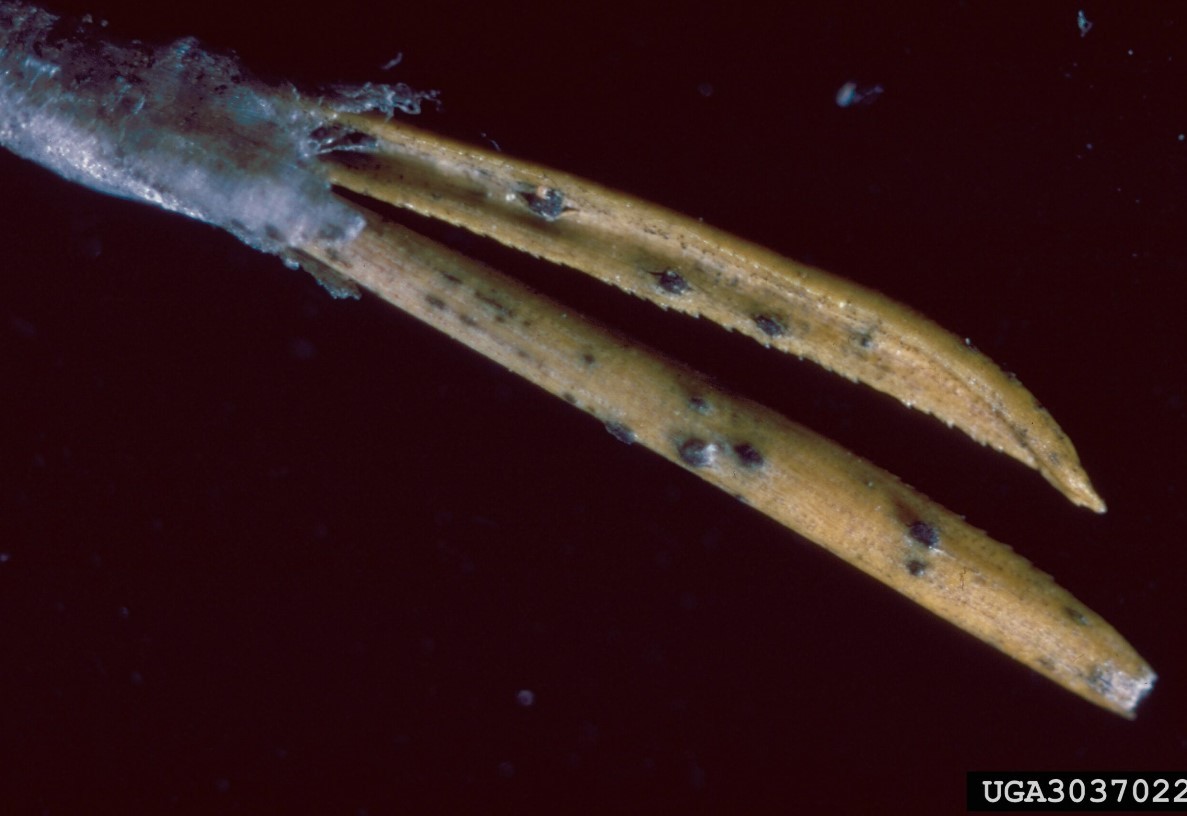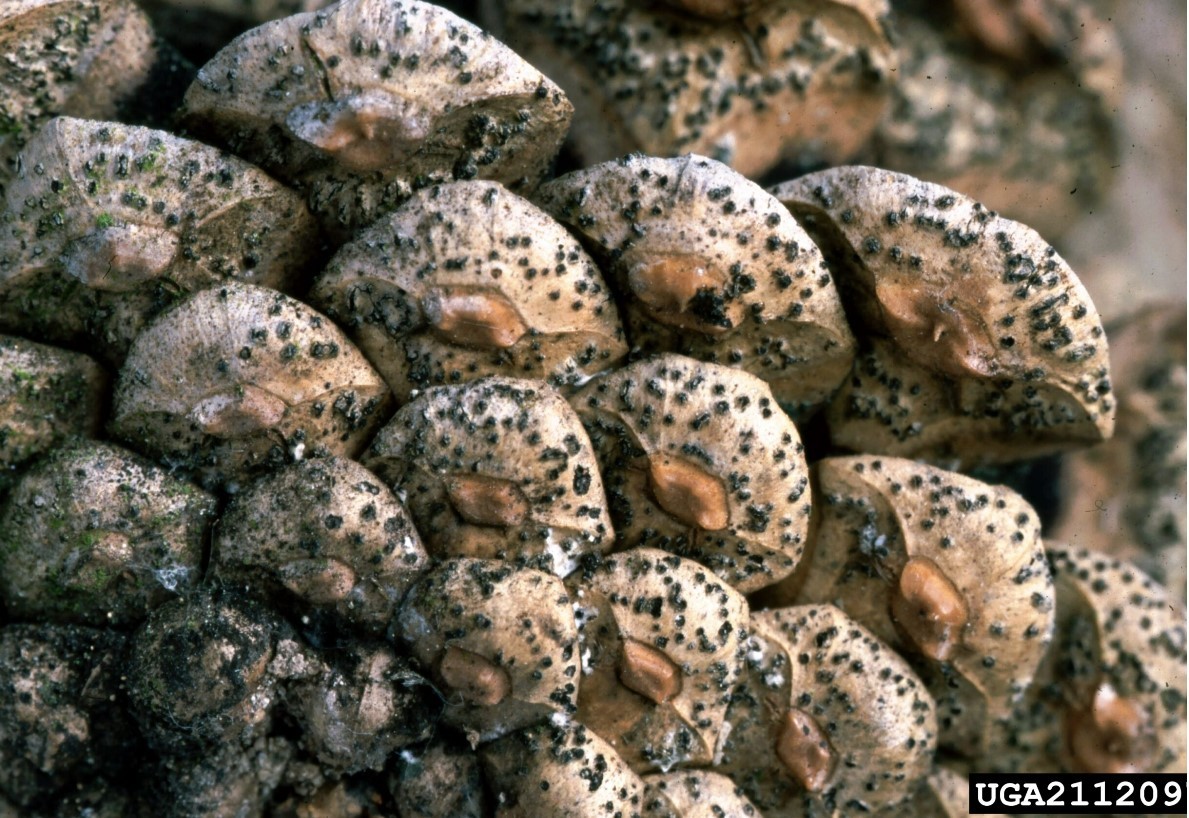Tip blight is a prevalent fungal disease that targets coniferous trees, including spruce, pine, and fir. This condition is characterized by the browning or blackening of needles or branch tips, which gives the affected area a blighted appearance.
The fungal pathogen responsible for tip blight is often from the Diplodia or Sphaeropsis genera and typically affects new growth such as the current year’s needles or shoots. The disease can spread quickly in warm, humid conditions and can cause the death of entire branches or even the entire tree in severe cases.
Sign and Symptoms
The disease is characterized by the browning, curling, and wilting of young needles and succulent shoots. These symptoms typically appear first in the lower branches of the tree. Discoloration begins at the base of the needles in early summer and spreads until the needles are completely brown. Infected shoots have a hooked appearance and eventually become defoliated. Senesced needles may remain on the tree for several years before dropping.
A close examination of dead needles and shoots will reveal the presence of small, black dots, which are the fungal fruiting bodies. Small, purplish cankers may also form on current-year shoots. Repeated infections lead to lower branch dieback, but plant death is uncommon in mature trees. However, conifer seedlings rarely survive the disease.
Sirococcus shoot blight is caused by Sirococcus conigenus, which overwinters on infected plant debris. The disease is most prevalent during cool and rainy spring conditions, which facilitate the spread of the disease onto newly formed conifer shoots. Once the fungus colonizes a host plant, subsequent infections of healthy trees can occur via rain splash or irrigation. The pathogen targets current-year or one-year-old growth but seldom invades older wood.
Prevention
Minor Pruning and Cultural Practice
- Remove and destroy infected shoots and needles on a regular basis in order to reduce potential inoculum sources and overwintering sites. This is especially important if nearby and understory plants are also susceptible to the disease, as fungal spores spread to healthy plants via rain splash or irrigation.
- In severe cases, the removal of infected overstory trees may be a necessary means of prevention.
- Shade conditions also facilitate the infection process. Ensure adequate spacing between susceptible trees in order to avoid high moisture, shade conditions that facilitate the spread of the disease.
Control- What you need an arborist to do
Pesticide
- Apply fungicide in late spring when the fungal spores initially spread to healthy host trees.
- Spray frequency may be increased during periods of rapid shoot growth and if high moisture conditions persist.


Tree Health Issues
Wondering about costs?

